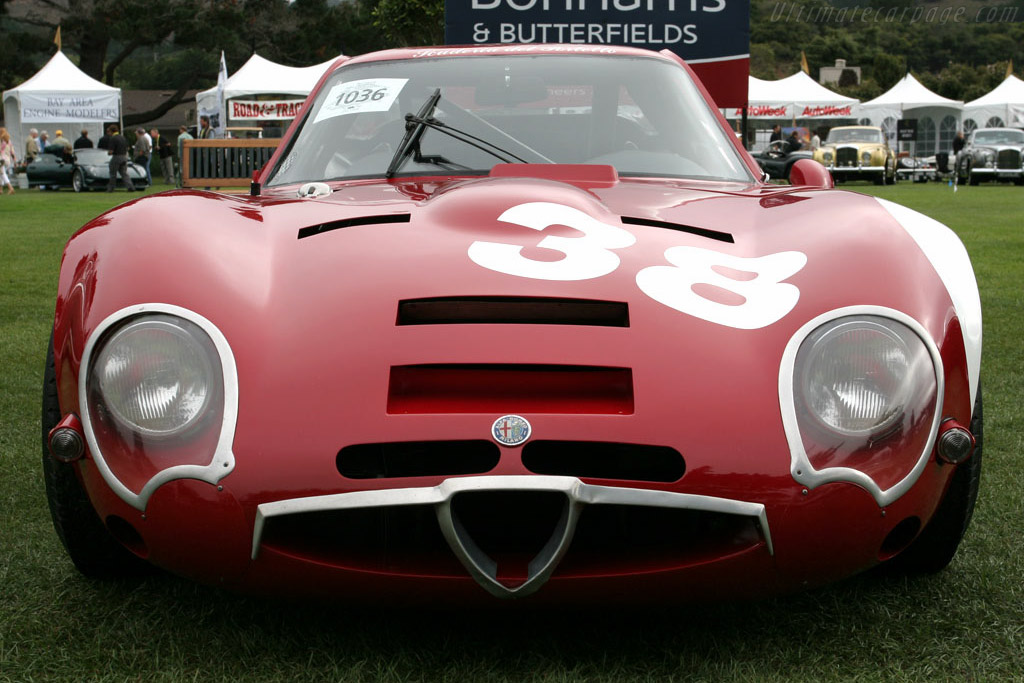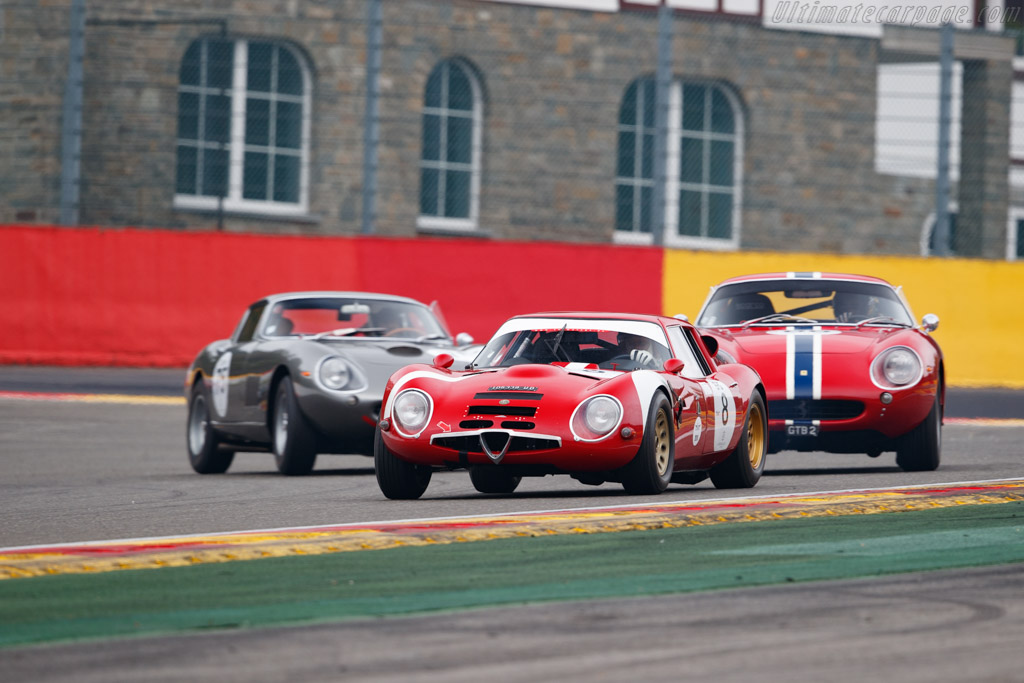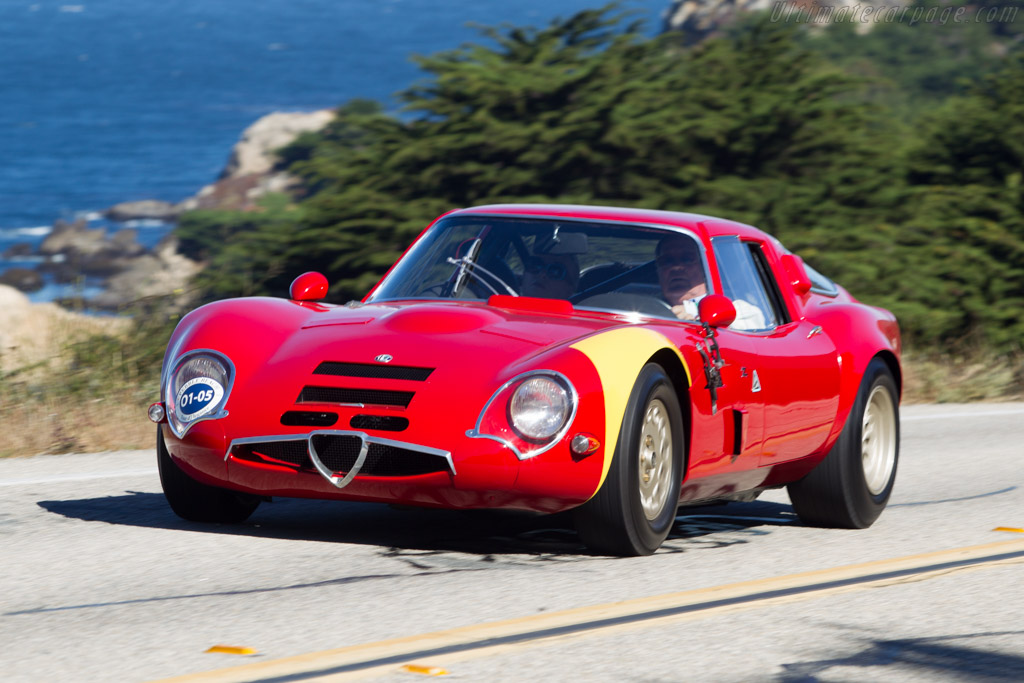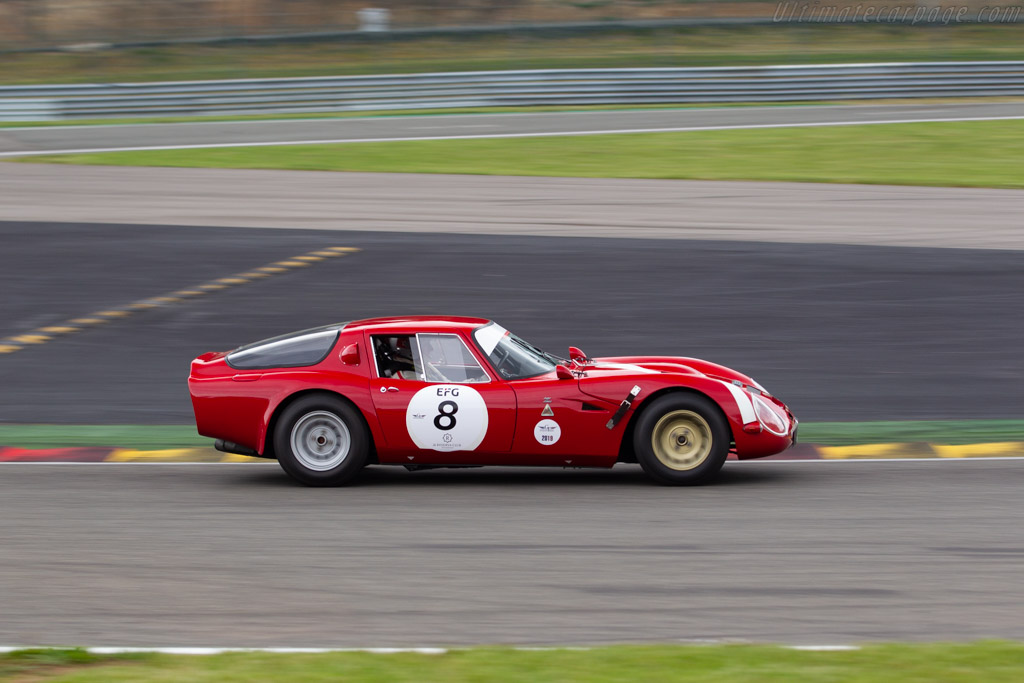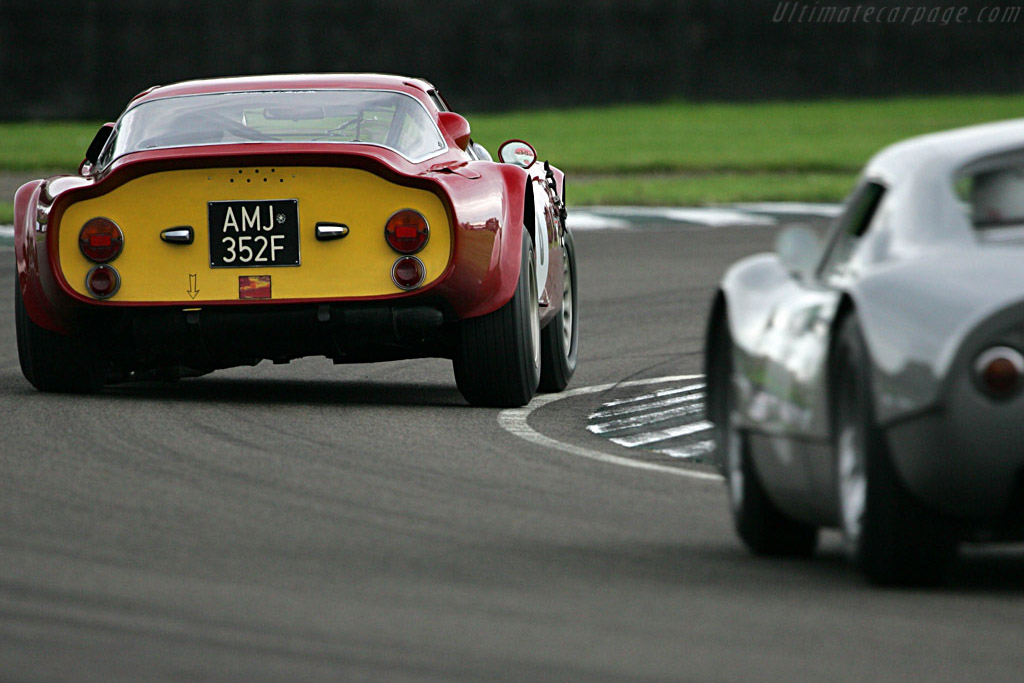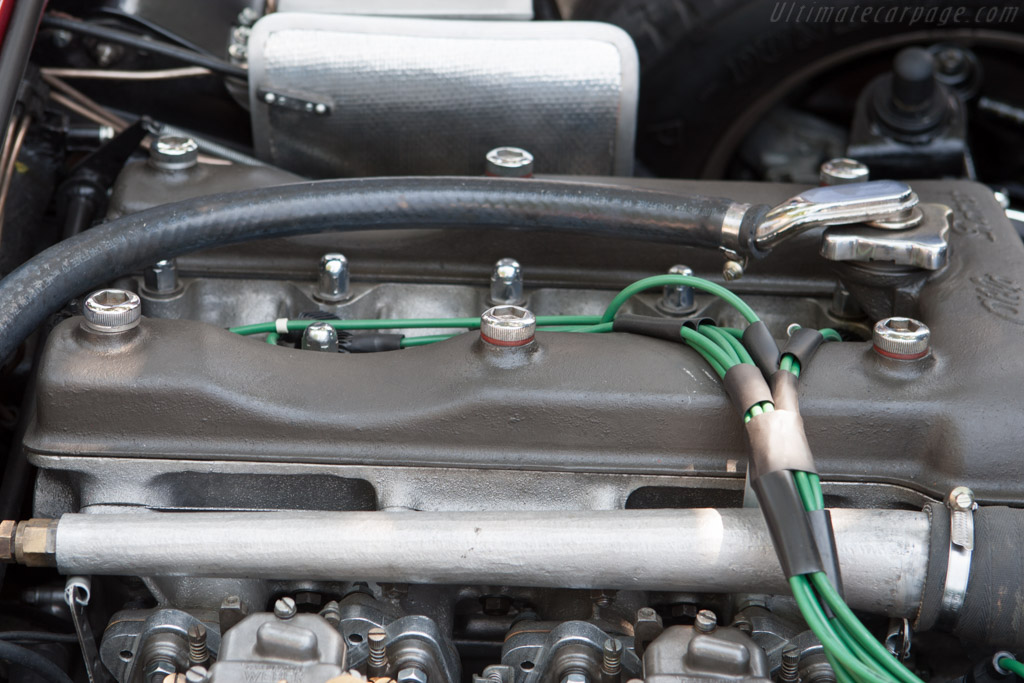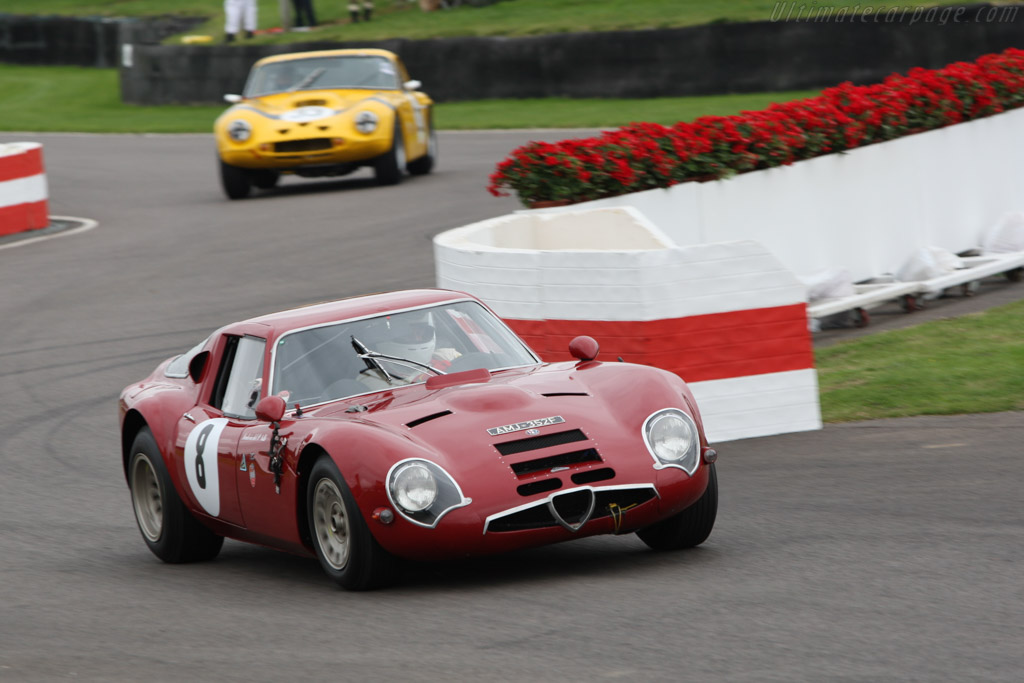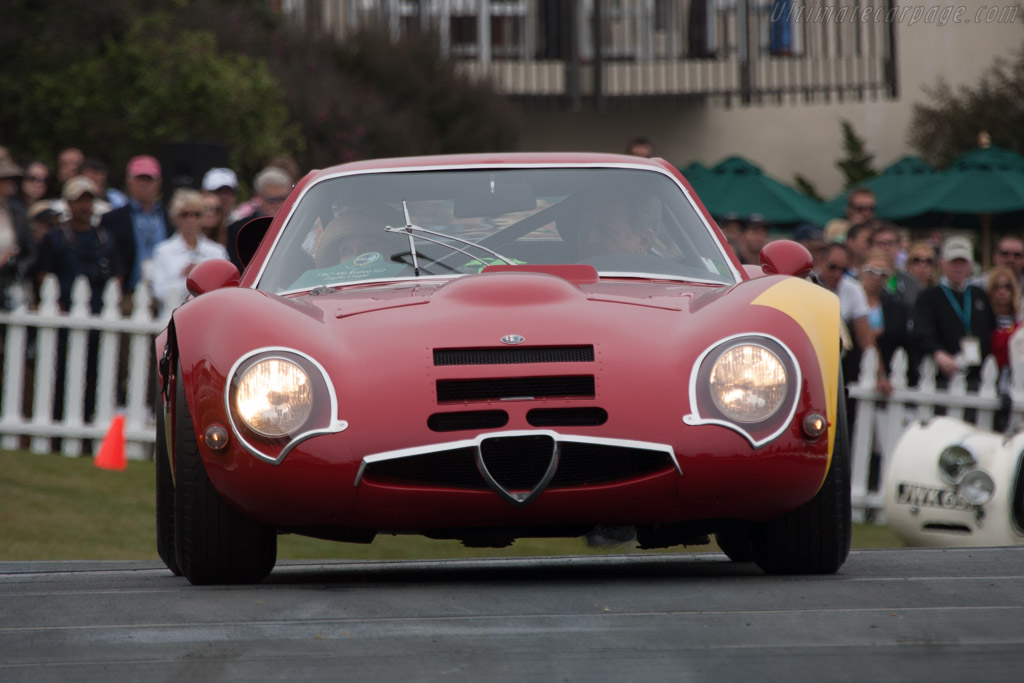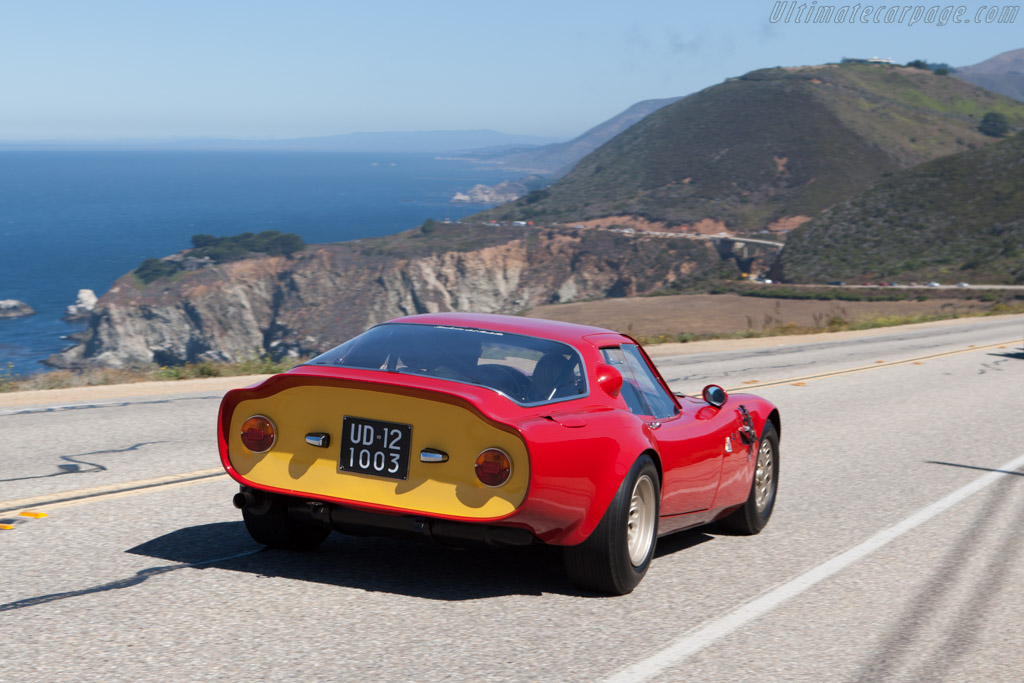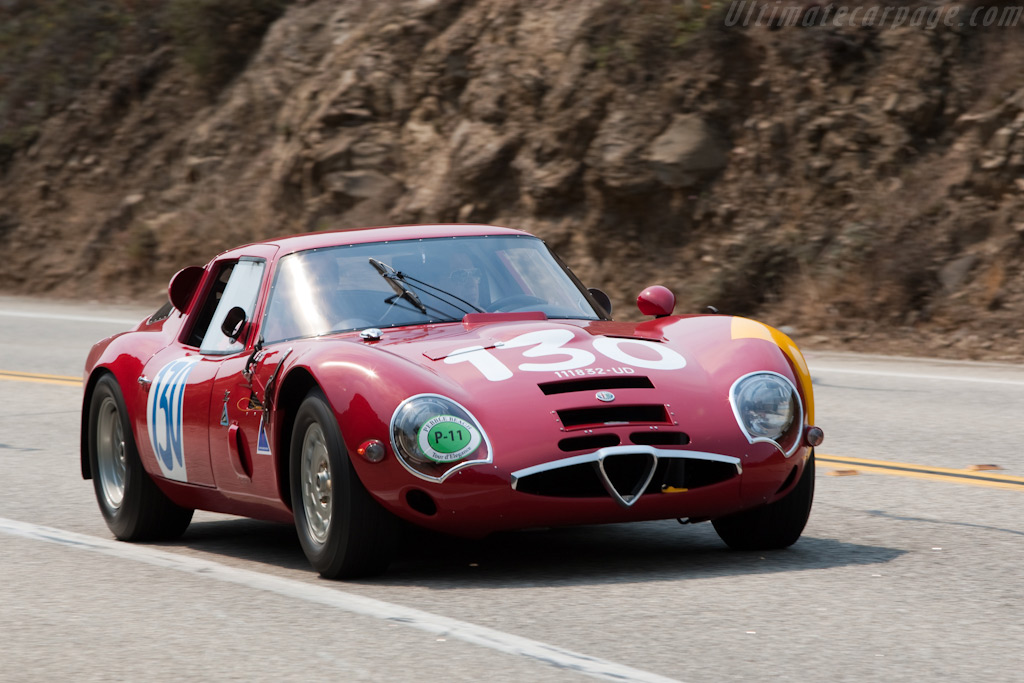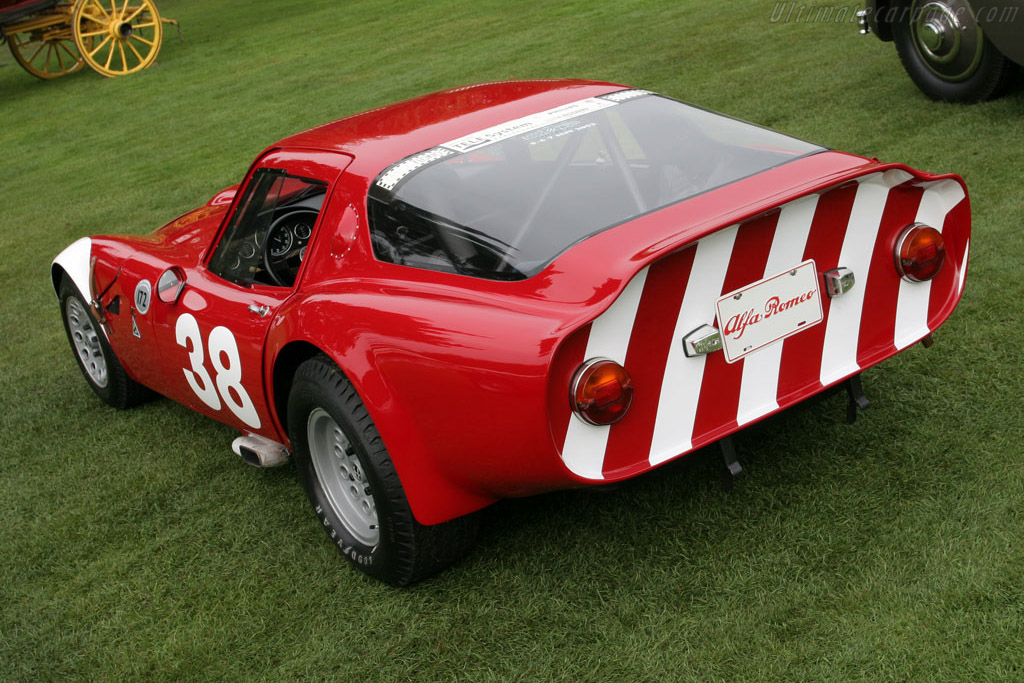Even though Alfa Romeo officially retired from motor racing after clinching their second consecutive Formula 1 title in 1951, the racing department was never really shutdown. Under the banner ‘Experimental Department’, the people responsible for the very successful racing cars continued their work, which resulted in a number of experimental vehicles with a remarkably large racing pedigree.

Under the leadership of young engineer Carlo Chiti, stunning machines like the Disco Volante and Sportiva were constructed. Although these were raced, ‘for testing purposes’, the bulk of the Alfa Romeos entered in races in the 1950s were modified road cars. Especially the 1900 and Giulietta models equipped with the lightweight and slippery Zagato bodies proved to be popular with the customer racers and quite often very successful.
In the second half of the 1950s, the number of projects rapidly decreases and Chiti left Alfa Romeo to join Ferrari’s competition department. Together with a large number of key personnel, Carlo Chiti left Ferrari again in the ‘palace revolution’ of 1961. Together with some of the other defectors, Chiti formed ATS, which produced a Formula 1 racer and a mid-engined road car. Neither was particularly successful and Chiti returned to familiar ground when he founded Autodelta. Although strictly speaking independent from Alfa Romeo, Autodelta served as the manufacturer’s racing department, much like Scuderia Ferrari had done before the War. The first job at hand was to produce a replacement for the Zagato bodied Giuliettas; a project that had been started as early as 1959, but never really took off.

Chiti was ideally suited to complete this project as it followed the same design principles as the experimental cars like the Sportiva. With these older cars, the new racer shared the tubular spaceframe chassis that set them apart from their contemporaries and even ten years later, it was an unusual construction for a GT-car. As the car was intended to run in the competitive sub-1600 cc class, shaving off as much weight as possible was vital. The road car derived Zagato Giuliettas featured sturdy, but heavy unitary constructions. The tubular spaceframe offered similar rigidity at a fraction of the weight. Much of the drive-train and the running gear was carried over from the new Giulia road car. The twin-cam four cylinder engine was available with single and later with twin spark ignition.
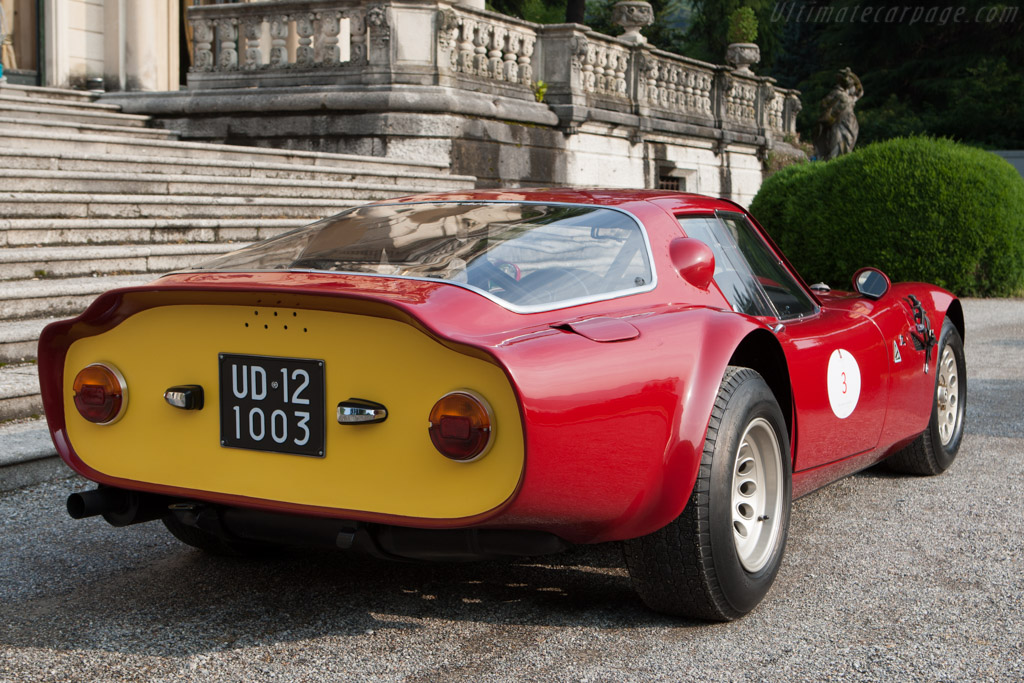
Zagato was the obvious choice for the design and construction of the coachwork for the new racer. Obvious because of the past successes and in particular because of the Milanese coach-builder’s vast experience with lightweight bodies, which would be a perfect match for the advanced chassis. In the previous years Zagato also made important advances in the understanding of aerodynamics, which led to incorporation of the Kamm tail on the second generation of their Giulietta designs. This greatly improved the high speed stability without increasing drag. Many design elements were carried over and refined for the new car, which was simply dubbed Giulia TZ for Tubolare Zagato. Three years after the project was initiated, the first Giulia TZ debuted on the Zagato stand at the 1962 Turin Motorshow. It would still take considerable time before the TZ was ready for its racing debut at the 1963 Monza FISA Cup, where it started off a rich racing career with a victory.
In order to be homologated for the GT-class, at least 100 examples needed to be constructed. That is why the Giulia TZ was listed in Alfa Romeo’s sale brochure even though it was built by Autodelta. As soon as sufficient numbers were assembled, the TZ started to dominate the 1600 cc class on both sides of the Atlantic. Among the many victories were class wins in the Nürburgring 1000 km and the Sebring 12 Hours.
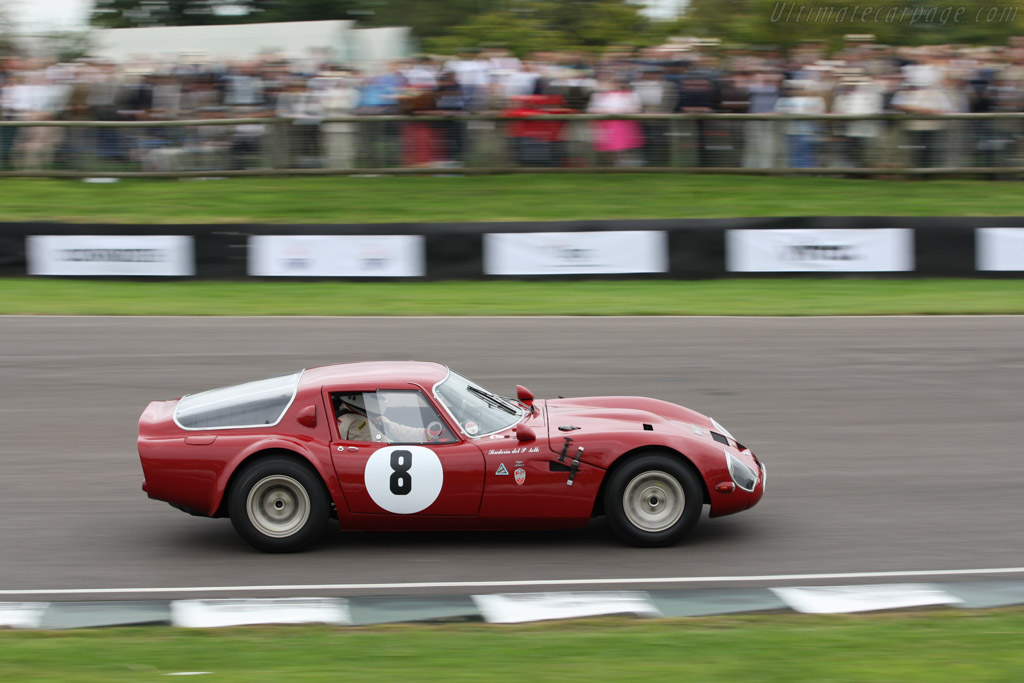
While the customers were winning races every weekend, the engineers at Autodelta were hard at work on a series of improvements. They did not leave an element untouched when they created the TZ2; a lighter, lower and more powerful version of the original TZ. The biggest departure was the use of fibreglass for the body instead of the aluminium used for decades. Whereas the original TZ was a graceful, elegant machine, the slightly changed proportions turned the TZ2 in a muscle car and it was regularly referred to as a mini-GTO.
Autodelta built only 10 (or 12) examples of the TZ2 before they focussed on the highly successful GTA touring cars and the similarly successful Tipo 33 sports prototypes. By that time the independent company was effectively incorporated in the mother company and the last TZ2s were constructed on the Alfa Romeo premises. Beautiful and highly successful because of its simplicity, the TZ2 remains as one of the most desirable GT-cars ever constructed eclipsed only by its big ‘brother’; the Ferrari 250 GTO.
Find out more on ultimatecarpage.com

